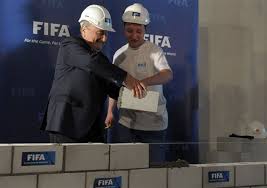By Paul Nicholson
December 22 – The day after his election to the FIFA presidency in May 2016, Gianni Infantino attended his first official public function in Zurich at the opening of the CHF 140 million ($158 million) FIFA Museum project.
“This is a place in which football is lived and breathed,” Infantino said. “Here you can inoculate yourself with the football virus, if you don’t already have it. In this place, only football matters!”
Four years later the museum has now been dragged into FIFA’s pot of ongoing and seemingly growing Swiss criminal litigation with the world governing body filing a criminal complaint with Zurich’s cantonal prosecutor against former president Sepp Blatter and members of his management team over the finances relating to the museum.
It is the latest in a series of tit-for-tat exchanges between FIFA and Blatter involving the Swiss criminal complaint system – dubbed by one source as the ‘kindergarden exchanges’. Blatter has already faced criminal charges levelled by FIFA but has not been convicted of any criminal behaviour. Infantino is currently under investigation by a Swiss Special Prosecutor appointed to probe various criminal charges brought against him, with Blatter having been called as a witness in this case.
The new complaint filed against Blatter and “other persons” refers to what FIFA says are museum project costs of CHF 500 million, and “identifies that the previous FIFA administration poured CHF 140 million into renovating and refurbishing a building that the organisation doesn’t own, while also locking itself into a long-term rental agreement on unfavourable terms when compared to standard market rates, which, in total, will cost FIFA CHF 360 million by the date of expiration in 2045.”
In a press release FIFA says that money could “have been channeled into the development of global football.”
FIFA Deputy Secretary General (Administration) Alasdair Bell said that the complaint was triggered by a “forensic audit” to find out “what really happened here”.
“That audit revealed a wide range of suspicious circumstances and management failures, some of which may be criminal in nature and which therefore need to be properly investigated by the relevant authorities. We came to the conclusion that we had no choice other than to report the case to state prosecutors, not least because the current management of FIFA also has fiduciary responsibilities to the organisation and we intend to live up to them, even if those before us dismally failed to,” said Bell.
FIFA said that it would also be submitting documentation to its own Ethics committee for investigation. It is understood that the circumstances surrounding the museum investment have not been referred to FIFA ethics function previously.
The museum was accommodated in the reconstruction of the ‘Haus zur Enge’ building in Zurich’s Enge district, and was always a controversial project locally. With FIFA originally hoping to construct the museum within the site of its current headquarters, planning permission was refused and FIFA were forced to move the project to Enge whose local residents put up opposition to the plan.
This forced FIFA into having to pay a premium as it was felt this was the only area of the city that provided a suitable location if the museum could not be built at HQ. The agreement of a 30-year lease was on the basis of allowing time to claw back the investment. FIFA, responding to questions from Insideworldfootball, said: “While the rental agreement for ‘Haus zur Enge‘ is financially very disadvantageous for FIFA and the annual rent is not in line with the market rate, the main purpose of this criminal complaint is to ensure that those people who damaged football are held accountable for their actions.”
At launch of the museum in 2016 (the renovation actually began back in 2013), the museum housed a library, sports bar, café, bistro, a 180˚ cinema and a giant pinball game. With more than 3,000 sq m of exhibition space it has 1,000 objects, 1,400 photos, 500 videos, 60 screens and 15 interactive stations.
Under Infantino’s leadership the museum quickly ran into financial difficulty with the new FIFA boss having halved staff from 100 to 50 by March 2017 and having closed the food and beverage operations.
The museum will now be part of its own special piece of FIFA political history, perhaps even a symbol of the enmity between Infantino and his regime, and pretty much everything that came before him.
Contact the writer of this story at moc.l1744782034labto1744782034ofdlr1744782034owedi1744782034sni@n1744782034osloh1744782034cin.l1744782034uap1744782034

